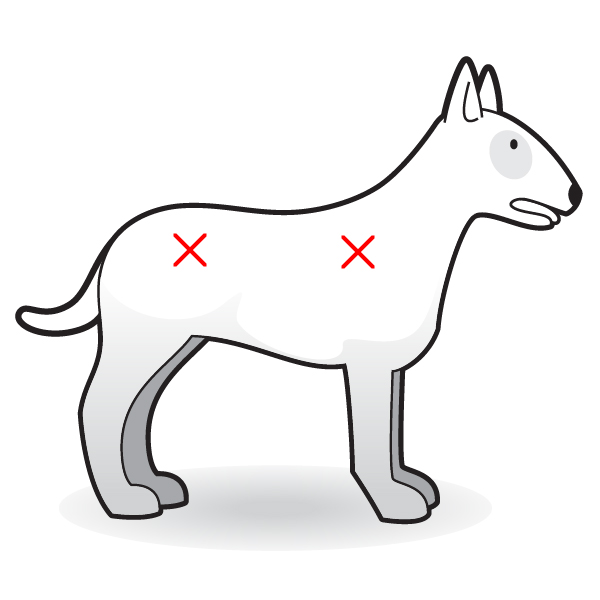Diabetes Mellitus Dog

37 Kingsway
Cronulla NSW 2230 AU
02 9527 2604
cronullavetclinic@gmail.com

Diabetes mellitus
The successful management of diabetes requires a number of lifestyle changes relating to medical (insulin injections) and dietary management.
Overview
Diabetes mellitus is one of the most common endocrine disorders in middle-aged dogs. It has been estimated that diabetes affects one in 308 dogs.
Diabetes mellitus or simply diabetes is a chronic condition caused by a deficiency or resistance to insulin. Insulin is necessary for the body to turn glucose into energy.
Although the management requires a strict and long-term commitment, it doesn't have to be as difficult as it sounds.
Signs
Common signs of diabetes:
- Increased drinking
- Increased urinating
- Change in appetite
- Chronic infections
- Enlarged liver
- Muscle loss
Causes
Predisposing factors:
- Genetics such as in Australian terrier, Beagles, Samoyeds
- Immune-mediated problems
- Pancreas problems
- Obesity
- Kidney disease
- Urinary tract problems
- Medications such as steroids or progestins
Diagnosis
Diagnosis is based on physical examination, laboratory tests and urinalysis. High blood sugar and high levels of glucose in the urine are often found.
Your veterinarian may evaluate and run tests to:
- Determine the overall health status of your pet
- Review current medications
- Look for disease complications such as cataracts
- Identify concurrent diseases such as urinary tract infections or pancreatitis
- Diagnose other conditions that may affect treatment such as Cushing or kidney disease
Management
Treatment is lifelong with regular visits to the veterinarian for frequent blood and urine tests.
Overall treatment aims to prevent the development of clinical signs, correct any weight issues, resolve any other disease and where possible obtain normal blood glucose with or without the need for insulin.
Management of diabetes:
- Weight monitoring
- Monitoring of water consumption and urine output
- A tailored diet that is moderate in fibre and low in carbohydrates for dogs
- Insulin injections
- Veterinary medications
- Frequent hospital stays for serial blood sampling
- Frequent testing of urine glucose
- Regular monitoring by your veterinarian to minimise complications such as urinary tract infections or cataracts
Your veterinarian will determine the frequency of visits. For example, your pet may be required to undergo weekly checks for the first month followed by every 3 months once on a stable dose of insulin.
Diet therapy
Diet therapy is extremely important in the management of diabetes. The goal of diet therapy is to correct any obesity issues, optimise body weight and minimise high blood glucose following meals. Feeding should follow strict portion sizes, be at consistent times and be complete and balanced with no added simple sugars.
Prognosis
Dogs can lead a good quality of life when the diabetes is managed with routine medication and a strict diet. However, even under proper care and regular veterinary visits, cataracts may still develop.
Potential complications
A diabetic pet needs its insulin to survive. But, too much insulin can also be deadly. Too much insulin can result in hypoglycaemia or a low blood sugar level. This can occur when a dog accidentally receives a too high a dose, too many doses or is not eating. Early signs of low blood sugar include weakness, lethargy or disorientation. If this is to happen, seek veterinary attention immediately. You may be advised to put a small amount of sugar syrup on the dog's gums to be able to safely get the dog to the hospital.
If your pet experiences any of the following, seek veterinary attention immediately:
- Seizures
- Coma
- Lack of appetite
- Changes in behaviour
- Depression
- Incoordination
- Cataracts
Common causes for uncontrolled diabetics:
- Poor insulin administration or handling
- Out of date or poorly stored insulin e.g. discoloured, cloudy
- Incorrect diet
- Insulin resistance due to obesity of steroid use
Tips
Tips to help prepare and give Insulin injections:
- Keep insulin refrigerated at all times but do not freeze
- Gently rock the insulin vial to ensure all contents are mixed (avoid shaking)
- Locate the area for injection, 3-4cm either side of the spine over the shoulder or hips. Alternate location per injection.

- Draw up insulin and flick the syringe to remove any bubbles and gently expel them from the syringe
- Insert the needle under the skin and pull back on the plunger to make sure you have not punctured a blood vessel (blood will be drawn into the syringe if you are in a vessel). If in position, gently inject insulin under the skin. If blood is drawn, remove and re-insert the needle.
- Reward your pet with affection and not treats
- Stick to a strict routine by giving insulin at the same time every day
- Always use a new, sterile needle and syringe
- Always allocate one person to medicating the pet to avoid double-dosing
- Keep a weekly log that details weight, any urine or blood readings, and behaviour such as appetite, drinking, activity levels
Always follow the environmental laws for the disposal of medical waste material or bring any used needles and syringes back into the veterinary clinic for disposal.
References
AAHA Diabetes Guidelines 2010
DavisonL,RisticJ,HerrtageM,etal.Anti-insulin antibodies in dogs with naturally occurring diabetes mellitus. VetImmunolImmunopath2003;91:5360.2.
GoossensM, NelsonR, FeldmanE, et al.Response to insulin treatment and survival in 104 cats with diabetes mellitus(1985-1995).JVetInternMed1998;12:1-6.3.
Hess RS, Kass PH ,Ward CR. Breed distribution of diabetes mellitus in dogs admitted to a tertiary care facility.JAmVetMedAssoc2000;216:1414-1417.4.
RandJ,BobbermienL,HendrickzJ,et al. Overrepresentation of Burmese cats with diabetes mellitus. AusVetJ1997;140:253-256.5.
Crenshaw K,Peterson M,HeebL,et al.Serum fructosamine concentration as an index of glycemia in cats with diabetes mellitus and stress hyperglycemia. JVetInternMed1996;10:360-364.6.
Catchpole B, Ristic JM, Fleeman LM, Davison LJ. Canine diabetes mellitus: Can old dogs teach us new tricks? Diabetologia 2005; 48: 1948-1956.